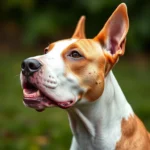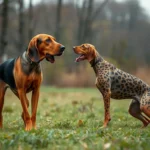
Introduction
The Dogo Argentino is a remarkable breed known for its strength, loyalty, and protective nature. Originating from Argentina, this breed has captured the hearts of many dog lovers worldwide. Understanding dog breeds is crucial for potential owners, as it helps in making informed decisions about pet ownership. In this article, we will focus on interesting and essential Dogo Argentino facts, exploring the unique characteristics, history, care, and temperament that make this breed stand out.
History of the Dogo Argentino
Origins
The Dogo Argentino was created in the 1920s by Dr. Antonio Nores Martinez, an Argentine physician and dog enthusiast. He sought to develop a breed capable of hunting big game, such as wild boar and puma, while also being a loyal companion. The breed was developed by crossing the now-extinct Fighting Dog of Cordoba with several other breeds, including the Great Dane, Boxer, and English Bulldog. This careful selection of traits has led to the Dogo Argentino’s remarkable physical and behavioral characteristics.
Purpose and Function
Initially, the Dogo Argentino was bred for its hunting prowess. With its powerful build and keen instincts, it was an excellent companion in the field, assisting hunters in tracking and bringing down large game. Over time, the breed transitioned into a family companion and protector, showcasing its affectionate nature towards children and its loyalty to families. Today, the Dogo Argentino is recognized not just as a hunting dog but as a versatile breed suited for various roles, including service and therapy dogs.
Recognition
The Dogo Argentino was first recognized by the Argentine Kennel Club in 1964. Following this, it gained recognition from several international kennel clubs, including the Fédération Cynologique Internationale (FCI) in 1985. Its status varies in different countries; while it is celebrated in Argentina, some regions have placed restrictions on its ownership due to its powerful stature.
Physical Characteristics
Size and Weight
Dogo Argentinos are large dogs, with males typically standing between 24 to 27 inches tall and weighing around 88 to 100 pounds. Females are slightly smaller, standing around 23 to 26 inches and weighing between 77 to 88 pounds. Their robust build and muscular frame contribute to their impressive appearance.
Coat and Color
This breed is known for its short, smooth coat, which is primarily white. Some Dogo Argentinos may have brindle markings or patches of color, but a predominantly white coat is standard. The short coat is relatively low-maintenance, requiring minimal grooming to keep it healthy and clean.
Distinctive Features
The Dogo Argentino boasts several notable physical traits, including a strong jaw, broad skull, and muscular build. Its powerful stance and confident demeanor make it easily recognizable. Compared to similar breeds, such as the American Bulldog or the Cane Corso, the Dogo Argentino has a more refined appearance, with a longer neck and a more athletic build.
Temperament and Behavior
Personality Traits
Dogo Argentinos are known for their loyalty, intelligence, and protective nature. They are affectionate with their families and can be gentle with children, making them suitable family pets. However, their strong prey drive and guarding instincts mean they require proper training and socialization from an early age.
Socialization Needs
Early socialization and training are crucial for Dogo Argentinos. Exposure to various environments, people, and other animals will help them develop into well-rounded dogs. Positive reinforcement training methods are recommended, as they respond well to praise and rewards. Consistency and patience are key in their training, as they can be stubborn at times.
Interaction with Families
Dogo Argentinos are generally good with children and can form strong bonds with family members. However, supervision is essential, especially with younger kids, due to their size and strength. They can coexist with other pets, but early socialization is vital to prevent any aggressive behavior towards smaller animals.
Care Requirements
Exercise Needs
Dogo Argentinos are active dogs that require regular exercise to maintain their health and happiness. A daily routine of at least 60 to 90 minutes of physical activity is essential. This can include walks, runs, or playtime in a securely fenced yard. Additionally, mental stimulation is crucial, so engaging them in training sessions or interactive toys can help prevent boredom.
Nutrition
Feeding a Dogo Argentino requires careful consideration of their nutritional needs. High-quality dog food, formulated for large breeds, is ideal. Portion sizes should be based on their weight, age, and activity level. It’s advisable to consult with a veterinarian to determine the best diet plan and any specific dietary requirements they may have.
Grooming
The grooming needs of a Dogo Argentino are relatively low due to their short coat. Regular brushing once or twice a week will help to remove loose hair and keep their coat healthy. They experience seasonal shedding, so more frequent brushing may be necessary during shedding periods. Bathing should be done as needed, but not too frequently, to avoid stripping their coat of natural oils.
Health Considerations
Common Health Issues
Like all breeds, Dogo Argentinos are prone to certain genetic conditions. Some common health issues include hip dysplasia, deafness, and skin allergies. Regular veterinary check-ups and health screenings can help detect these issues early and ensure the overall well-being of the dog.
Regular Veterinary Care
Routine veterinary care is essential for maintaining the health of a Dogo Argentino. Annual check-ups, vaccinations, and parasite prevention are crucial components of responsible pet ownership. This proactive approach helps to catch any potential health concerns early on.
Lifespan and Aging
The average lifespan of a Dogo Argentino is around 10 to 15 years. As they age, they may face common age-related issues, such as arthritis or decreased mobility. Providing a comfortable living environment, regular veterinary care, and a balanced diet can help support their health in their senior years.
Training and Socialization
Importance of Training
Training is vital for Dogo Argentinos, as their strong-willed nature can lead to behavioral challenges if not properly managed. Obedience training is recommended to establish a solid foundation for good behavior. Incorporating agility or obedience classes can also provide beneficial structure and socialization opportunities.
Socialization Techniques
Socialization should begin early, exposing Dogo Argentinos to various people, places, and situations. Puppy classes, dog parks, and controlled playdates with other dogs can help them develop the necessary social skills. Positive reinforcement techniques, such as treats and praise, can encourage good behavior during social interactions.
Behavioral Challenges
Common behavioral challenges for Dogo Argentinos include aggression towards other animals and stubbornness during training. These issues can often be mitigated through consistent training and socialization. Engaging a professional dog trainer with experience in handling strong breeds can also be beneficial for overcoming behavioral hurdles.
Dogo Argentino in Popular Culture
Representation in Media
The Dogo Argentino has made appearances in various films and television shows, often depicted as a loyal and fearless companion. Its powerful presence on screen helps to showcase the breed’s impressive physical attributes and capabilities, contributing to its growing popularity.
Public Perception
Despite its strengths, the Dogo Argentino often faces stereotypes and misconceptions. Many people associate the breed with aggression due to its muscular build and history as a hunting dog. However, with proper training and socialization, Dogo Argentinos can be gentle and loving companions. Educating the public about the breed’s true nature is essential in changing perceptions and promoting responsible ownership.
Pros and Cons of Owning a Dogo Argentino
Advantages
Owning a Dogo Argentino comes with several advantages. They are known for their loyalty and protective instincts, making them excellent family guardians. Their intelligence and trainability allow them to excel in various activities, from obedience training to agility sports. Additionally, their affectionate nature makes them loving companions for active families.
Disadvantages
However, there are potential challenges to consider. Dogo Argentinos require experienced ownership, as they may not be suitable for first-time dog owners. Their strong prey drive necessitates early socialization and training, which can be time-consuming. Additionally, their exercise needs demand a commitment to regular physical activity, making them a better fit for active individuals or families.
Conclusion
In summary, the Dogo Argentino is a unique breed that offers both challenges and rewards for potential owners. Understanding their history, physical characteristics, temperament, care requirements, and health considerations is essential for anyone considering adding this breed to their family. With the right training, socialization, and commitment, a Dogo Argentino can be a loyal and loving companion. For those who lead an active lifestyle and are prepared for an intelligent and protective dog, the Dogo Argentino may just be the perfect match.
References
- American Kennel Club
- The Dogo Argentino Club of America
- Various veterinary sources on canine health and nutrition
- Dog training literature and expert opinions









